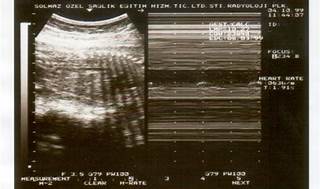A nurse is caring for a client who is at 38 weeks of gestation and has a score of 10 on her biophysical profile. Which of the following actions should the nurse take?
Administer oxygen and notify the provider.
Assure the client that the score is within the expected range.
Offer the client orange juice and repeat the assessment in 1 hr.
Assist the client into a side-lying position.
The Correct Answer is B

The correct answer is choice B. Assure the client that the score is within the expected range.
Choice A rationale:
Administering oxygen and notifying the provider is not necessary for a biophysical profile (BPP) score of 10. A score of 10 indicates that the fetus is well-oxygenated and there are no signs of distress.
Choice B rationale:
A BPP score of 10 is considered normal and reassuring, indicating that the fetus is well-oxygenated and there are no signs of distress. Therefore, the nurse should assure the client that the score is within the expected range.
Choice C rationale:
Offering the client orange juice and repeating the assessment in 1 hour is not necessary for a BPP score of 10. This action might be considered if the score were lower and there was a need to reassess fetal well-being.
Choice D rationale:
Assisting the client into a side-lying position is not required for a BPP score of 10. This position is typically recommended to improve uteroplacental blood flow in cases of fetal distress or lower BPP scores.
Nursing Test Bank
Naxlex Comprehensive Predictor Exams
Related Questions
Correct Answer is C
Explanation
Choice A rationale:
The client's statement, "I need to schedule the test when the baby is usually active,”. is accurate and demonstrates a good understanding of the nonstress test (NST). The NST is typically performed to assess the baby's heart rate and movements when they are active, which provides better insights into the baby's well-being.
Choice B rationale:
The client's statement, "The baby's heart rate will be monitored during the test,”. is correct and indicates a solid grasp of the purpose of the NST. During the test, the baby's heart rate is continuously monitored to assess their overall well-being and any signs of distress.
Choice C rationale:
This is the correct answer. The client's statement, "I will have to lie on my back during the test,”. indicates a need for further teaching. In an NST, pregnant individuals are usually asked to lie on their left side, not on their back. The left lateral position enhances blood flow to the placenta and the baby, making it the preferred position for this test.
Choice D rationale:
The client's statement, "I will be able to go to the bathroom during the test as necessary,”. is accurate and demonstrates a good understanding of the NST procedure. Unlike some other prenatal tests, NST allows pregnant individuals to change positions, including using the bathroom if needed, to ensure their comfort during the monitoring process.
Correct Answer is D
Explanation
The cervix is dilated 3 cm: This indicates the width of the cervical opening, which is 3 cm wide.
It is effaced 30%: This means the cervix has effaced or thinned out by 30%, indicating how much the cervix has shortened and thinned in preparation for labor.
The presenting part is 1 cm above the ischial spines (indicated by the negative number, -1): This measurement shows the position of the baby's head in relation to the ischial spines of the pelvis. In this case, the baby's head is 1 cm above the ischial spines.
Option A ("The cervix is dilated 3 cm, it is effaced 30%, and the presenting part is 1 cm below the ischial spines."): This option incorrectly interprets the baby's position as being 1 cm below the ischial spines, which is not the case. The negative sign (-1) in the documentation indicates that the presenting part is 1 cm above the ischial spines.
Option B ("The cervix is effaced 3 cm, it is dilated 30%, and the presenting part is 1 cm above the ischial spines."): This option switches the interpretation of dilation and effacement. In the original documentation, the dilation is given as 3 cm, while effacement is 30%. This option incorrectly states that effacement is 3 cm and dilation is 30%. Additionally, it correctly identifies the presenting part's position.
Option C ("The cervix is effaced 3 cm, it is dilated 30%, and the presenting part is 1 cm below the ischial spines."): This option correctly interprets effacement and dilation but incorrectly states that the presenting part is 1 cm below the ischial spines. The original documentation indicates that the presenting part is 1 cm above the ischial spines, as denoted by the negative sign (-1).
Whether you are a student looking to ace your exams or a practicing nurse seeking to enhance your expertise , our nursing education contents will empower you with the confidence and competence to make a difference in the lives of patients and become a respected leader in the healthcare field.
Visit Naxlex, invest in your future and unlock endless possibilities with our unparalleled nursing education contents today
Report Wrong Answer on the Current Question
Do you disagree with the answer? If yes, what is your expected answer? Explain.
Kindly be descriptive with the issue you are facing.
